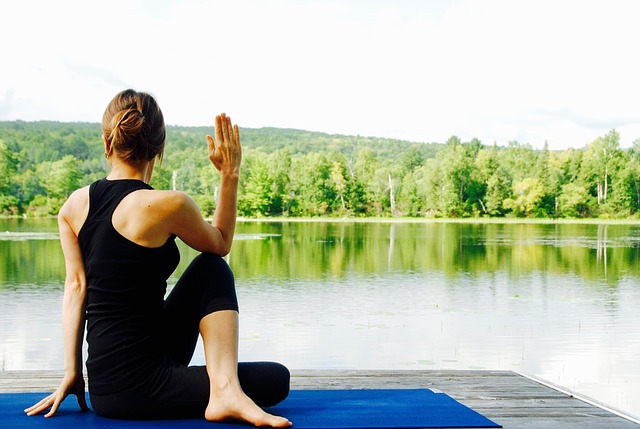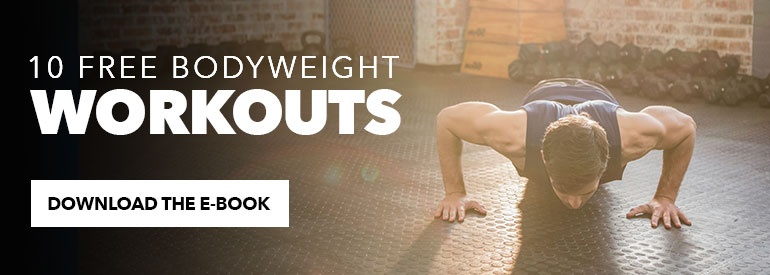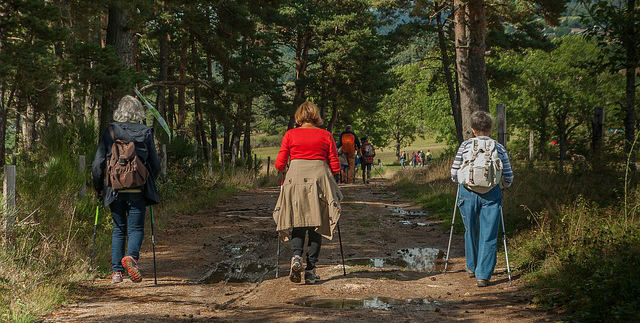 Reading Time: 7 minutes
Reading Time: 7 minutesNot long ago someone asked me to define the word “fitness.” My answer read something like this: “Fitness is an external condition exemplified by an outward expression of one’s own individual physicality.” Merriam Webster defines fitness as simply “the quality or state of being fit,” and being synonymous with health, strength, and vigor.
While we all may define fitness somewhat differently and participate in exercise uniquely, we can likely agree that for many, fitness boils down to three elements — physical function, proficiency of skill, and the aspiration for a “better” physique. But lost in the shuffle is an equally important variable relating to health and fitness — the journey of the inward path.
Improving the form and function of your body is a noble pursuit. Unfortunately, the laws of physics dictate that aesthetic change and the corporeal world are temporary destinations. A state of fitness, physically speaking, is not a sustainable goal. As we age, our muscles atrophy, strength declines, and cardiovascular capacity diminishes. As depressing as that may sound, the silver lining in aging and physical breakdown is the opportunity to sharpen mental acuity, learn invaluable life lessons, and develop our relationship with our authentic self.
In this way, the pursuit of fitness presents the optimal platform to promote lasting change and continued development through introspection and personal growth. Here are five ways you can complement the outward expression of your fitness and maximize your inward journey of self-discovery.
1. The Expression of Joy
Ironically, even though our bodies are decaying, peak happiness typically occurs in the latter stages of life. Quite possibly this is because we finally stop caring what others think. Or perhaps it’s due to us making the most of every opportunity to slow down and smell the roses. Whatever the reason, along with the aches and pains of aging comes feeling more comfortable in your own skin and arriving closer to the goal of self-actualization.
The critical component in manifesting joy through physical movement is expressing authenticity. “Authenticity” may sound great, but it can also seem like a vague and elusive concept to manifest. All it really means is experiencing that sense of “I was meant to do this.”
Whether “this” is ballet, boxing, or Bikram yoga, the more you find different ways to move your body, the more likely you’ll come across one that feels as if it was made for you. The litmus test is how well you stick with the program. Exercise done purely as a means to an end typically runs its course once we reach that end, reality sets in, or the novelty wears off. But joy brings us back to an activity again and again.
2. The Optimization of the Present
These days, with the overwhelming influence of technology, many of us feel desperate to escape the present and be somewhere else. The fitness world is no exception with exercise-based apps, wearables, and flat screens flooding the common health club environment. Compounding this, fitness programs tend to overlook the present and focus on a future goal, outcome, or physical manifestation.
But the present moment is the only thing that is real, the only thing we truly have, and the only thing that’s guaranteed.
The best way to learn when you’re in school is to pay attention and do the work, and the purest way to grow spiritually at church, synagogue, or meditation practice is to surrender wholly to the present. The gym should be no different.
The gym is a temple of learning, physical grace, and health. You cannot learn and grow if you are distracted. You cannot see your body move if you’re looking at a smartphone. And you cannot listen to your breath if music is pounding in your earphones. The only way to get there is to be here.
3. Seeing the Body as a Metaphor for Life
One of the things actors are adept at is incorporating physical mannerisms and actions to help them portray emotion and story. The best actors can speak without saying a word — they use movement, props, and metaphors to communicate a “truth” about life.
As athletes and exercisers, we are also “actors” in our own story, whether we’re playing the role of team athlete, lone-wolf exerciser, or group exercise class participant. Your body has a story to tell and by exploring the concept of “metaphors” you may unlock clues that help you on your inward path of self-discovery.
For instance, those who carry extra body weight perhaps do so unconsciously as “protection” from unhealed wounds and trauma. Physical injuries are also helpful in taking a deeper look at the issues potentially holding you back in life. But even a fit body can instruct us by how well it moves, how flexible it is, or the tension it holds. For example, an overly muscular body that is rigid and inflexible may point to issues of not being adaptable in your beliefs or outlook.
Seeing your body from the outside and looking for places where the interior and exterior intersect may help you break though barriers and expose what is truly limiting you from reaching your potential.
4. Seeking a Tribe of Like-minded Individuals
When I started yoga years ago, I looked around for the best-looking women. When I started martial arts and boxing, I sized up my potential sparring competition as I shopped the various gyms and schools. In the past, when looking at gyms to join, I looked at how old or fit the membership base was.
I was mistaken in these approaches, and similar to me, many people think that “finding a fitness tribe” means finding a group that looks (or acts) just like you do.
It’s natural to look at fitness through the lens of the physical and base our opinions accordingly, but on a journey of health, what is truly important are internal qualities. What keeps you coming back to fitness is the same thing that keeps you at your job, church, or relationships, and that likely involves values such as trust and integrity.
Another value that can be a wonderful motivator is diversity. The young can learn much from the old, men can learn much from women, and vice versa. Speaking from personal experience, I found a great example of community and diversity in the YMCA and experienced the literal manifestation of their four core values — respect, responsibility, honesty, and caring.
Basing your wellness journey on values instead of aesthetic metrics will result in enhanced learning, deeper connection, and lasting health.
5. Aging Gracefully, Not Foolishly
Just like there are four seasons in a year, there are four seasons in life — adolescence, young adulthood, middle-age, and maturity. As nature provides the right foods for us to eat in each season, life also provides the right path for us in wellness and fitness. Our job is to tune in and pay attention to the signs.
That said, the aging process is different for everyone and how hard to push can be a bit tricky. Culturally, we laud the eighty-year-old triathlete and forty-year-old professional athlete who still competes. Setting limitations based on age alone can be, well, limiting. But as I have learned the hard way, not doing so is arrogance. What is critical is for you to be acutely aware of your body in time and space. If the machine is breaking down, that is a sign it’s time to change courses, or possibly prepare for the next season.
A coach, mentor, or advisor can be a wonderful companion in helping you make necessary changes. Look for one who not only walks the walk and talks the talk, but sees the deeper picture.
The Pursuit of Fitness and the Inward Path
An education isn’t about getting good grades and memorizing facts and equations, but about discovering your genuine talents and ability to think critically. Similarly, exercise and fitness isn’t about sets, reps, and a percentage of body fat, but about learning how to move your body, demonstrating grace, and optimizing health.
You can’t take the six-pack abs and toned arms with you through each season of life, but the inward path of self-discovery is ever unfolding and advancing if we allow ourselves the gift of experiencing the present. To do so means to know your body and in turn, your true you.













